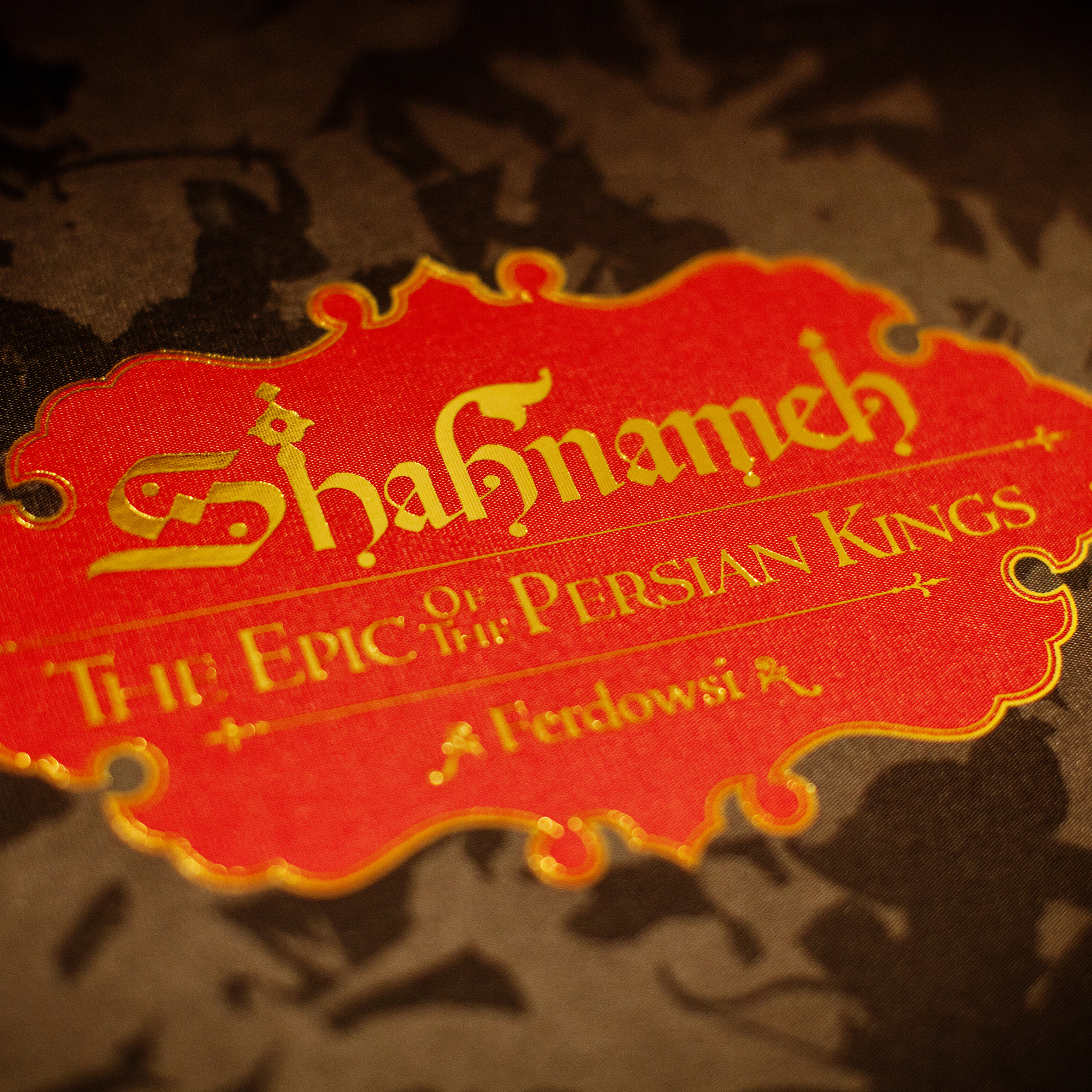Hamid Rahmanian and Ahmad Sadri’s modern retelling of Ferdowsi’s epic masterpiece
Khorasan, 1010 A.D. After one of the darkest and most pitiful periods Iran had ever seen – the lamented ‘two centuries of silence’ brought by the Arab invaders in the seventh century following the demise of the Sassanian Empire – the Persian poet Ferdowsi forever changed the course of Iranian literature, history, and identity. Along with the quelling of the monotheistic Iranian Zoroastrian faith and the persecution of its adherents, the Arab invaders, sparked by an imperialistic zeal and religious fervour, also strove to impose the Arabic language on the subdued Iranian populace. For a while, it seemed all hope was lost; gone were the standard of Cyrus the Great and the Kaviani flag, and in their stead, the austere black banner of the Abbasids; gone, from the courts of Ctesiphon and Balkh the ornate Persian panegyrics and the sound of the harp, and banished from the Magian temples the flame of Ahura Mazda. Indeed, in the land of the noble, it seemed the sun had forever set.
According to legend, in the mid-10th century, a king from the Samanid dynasty in Khorasan (an area which once referred to not only Eastern Iran, but much of Central Asia as well) had grown weary of hearing the Arabic language in his court, and longed once more for the sound of his flowery native tongue. Shortly afterwards, the Samanids soon emerged as ardent supporters of the indigenous Persian language, and instigated what is often referred to as a ‘revival’ of Persian culture. Along with poets such as Rudaki and Daghighi, who yearned for the glory days of house of Sassan, Ferdowsi emerged as a major literary figure with his magnum opus, the Shahnameh (Book of Kings). Serving as an epic retelling of pre-Islamic Iranian myths and legends in Persian from the time of Kyumars and the Pishdadian dynasty to that of the Greek and Arab invasions, Ferdowsi – according to the poet himself – reportedly laboured for 30 years in an attempt to preserve the legends and language of his homeland. Basi ranj bordam dar in sal-e si; Ajam zendeh kardam bedin Parsi, he famously wrote. Much have I toiled during this 30 years’ time; the Iranians have I revived with this Persian of mine.
Over a thousand years later, the Shahnameh has not only managed to firmly stand its ground in the face of countless other invasions and cultural revolutions, but has also inspired new generations of poets, playwrights, filmmakers, musicians, writers, and artists around the world, in addition to being oft lauded as one of the world’s great literary triumphs. The most recent testament to Ferdowsi’s legacy, perhaps, is a new graphic retelling of the Shahnameh by US-based multimedia artist Hamid Rahmanian and translator Ahmad Sadri, which was recently published as a sumptuous hardback this May. A few weeks ago, I chatted with Hamid, the visual ‘DJ’ behind the book about the project and the influence of the Shahnameh throughout the ages.
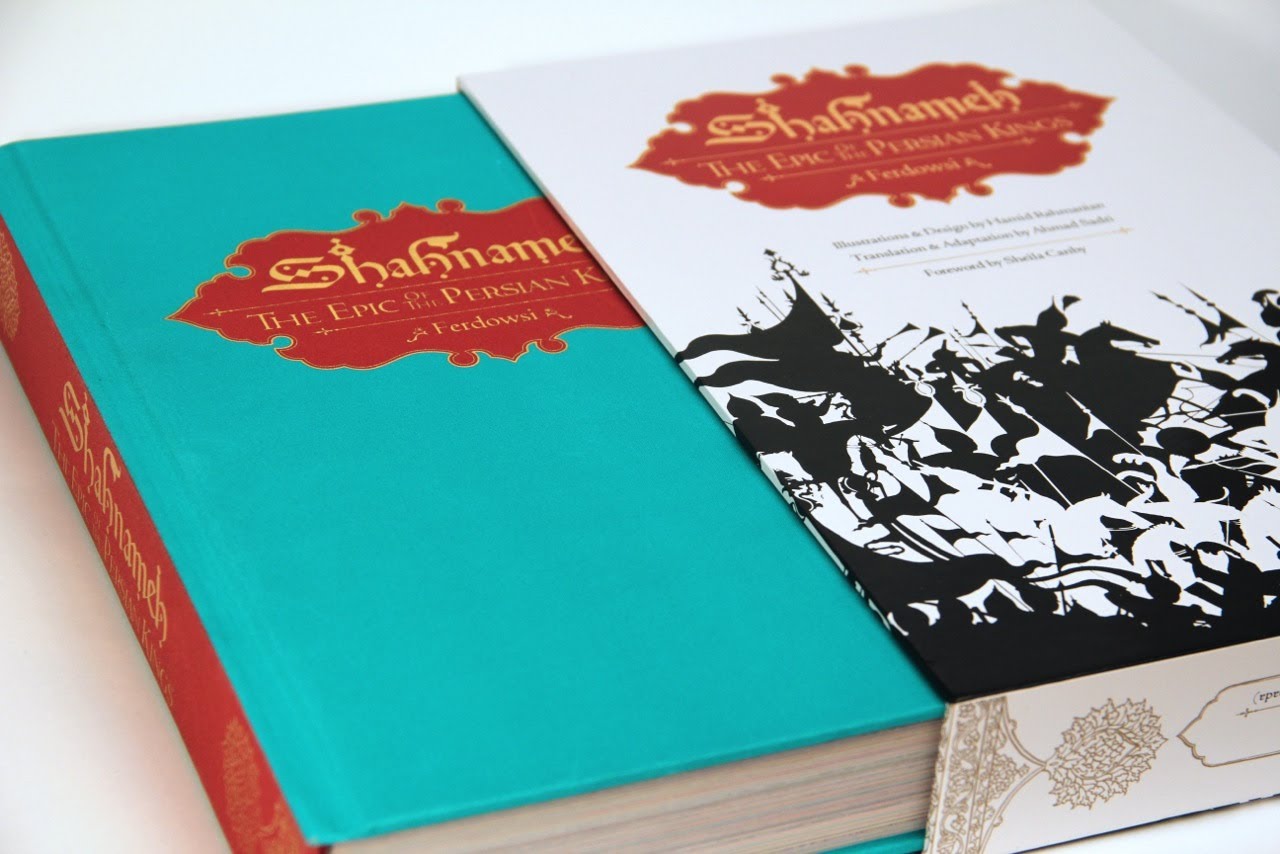
The Persian miniatures you’ve used to illustrate the stories in the Shahnameh have been culled from various sources, eras, and cultures. While the vast majority of the images are from Iranian schools of miniature painting, there are also some from the Ottoman Turkish and Indian Mughal schools. Why did you opt for this approach?
I look at myself in this [context] like a DJ; a DJ takes already existing sounds, manipulates them, changes the composition and tempo, and creates this whole new [piece] of music. I’ve [applied] this same principle [using] the miniatures and lithographs from the late 14th century to the mid 19th century from all the [places] that were influenced by Persian [culture], such as Mughal India, the Ottoman Empire … For instance, the Ottomans were very influenced by the Tabriz and Shiraz [schools], and the Mughals … During [the reign of the Safavid king] Shah Ismail II, because of the economic collapse [of Iran] and the state of mayhem of [the country], many of the [Persian] masters moved [to India], or were bought by the Mughal court … they established the Mughal [school of] Indian miniature paintings … I have culled together over 8,000 single pieces to create these 500 pages … I’ve included [miniatures from] all these territories because whether you’re Iranian, Arab, Turkish, Afghan, Tajik, or from India or Lebanon – you share the same visual culture.
From a technical perspective, how did you manage to include so many miniatures from so many different sources? Did you have access to actual manuscripts, or were digital images used?
I bought books; I bought close to 14,000 dollars worth of books! And I had to go over 83 – 90 books that I scanned entirely … for each story, I had to go through all these manuscripts and details with my magnifying glass, and find [specific] elements like an elephant, a cloud, flowers, the sun … For instance, there’s one story where Farangis, the daughter of [the Turanian king] Afrasiyab is pregnant and is beat up by a guard, because they wanted to [kill] the baby … I had to find a character in that position, and had to go through all these pages … to find [such a] character … and sometimes, if I couldn’t find a character in such a position, I had to combine different body parts to create what I had in mind.
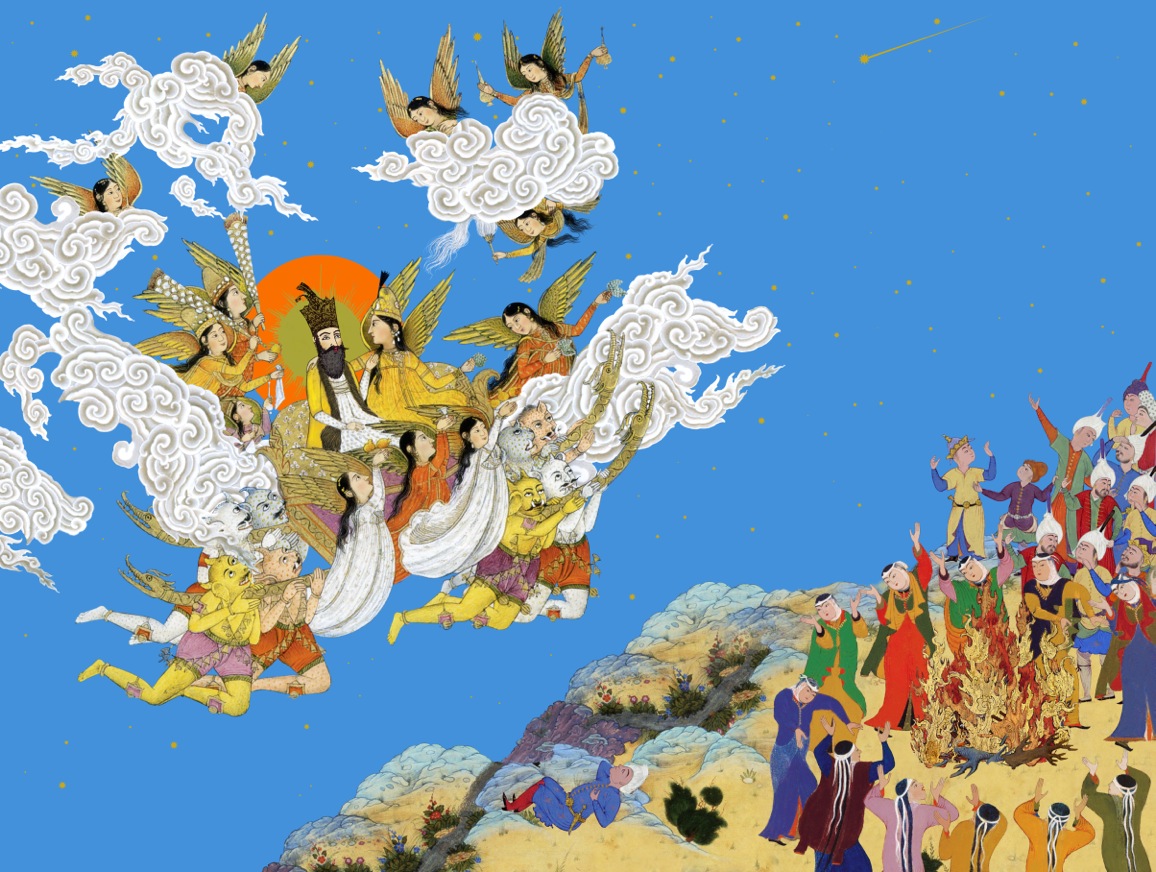
I sort of compare the method I used to the same method that Ferdowsi used to [write] the Shahnameh. Ferdowsi didn’t create anything from scratch – he [referred to] a millennium-old tradition of mythology and epics and put [everything] into heroic verses to sort of change the presentation of the stories. I did the same thing – I collected [images] from the visual tradition of Persian culture from different eras and territories and presented them in a different format, which would also appeal to modern tastes.
I have culled together over 8,000 single pieces to create these 500 pages … I’ve included [miniatures from] all these territories because whether you’re Iranian, Arab, Turkish, Afghan, Tajik, or from India or Lebanon – you share the same visual culture
While the Shahnameh is composed of two major portions, namely the myths and legends of ancient Iran ending with the death of Rostam, and the more historical account (though it is still firmly rooted in lore and legend) of Iran’s heroes between the Greek and Arab invasions, this version only includes the former. Why is that?
Actually, there are three parts in the Shahnameh; the first [mythological] part starting with the first king, Kyumars and ending with the death of Fereydoon; the second epic part, beginning with the birth of Zal and ending with the death of Rostam, and the third historic part, starting with the invasion of Alexander and ending with the fall of the Sassanian dynasty and the Arab invasion of the 7th century. The reason we focused on the first two is because … they have a connected narrative base; all the characters are somehow connected to each other. Ahmad Sadri, who provided the translations, did an excellent job using a cinematic approach to storytelling to adapt the stories and make them accessible for all, not only academicians … The third part contains a lot of smaller stories [that are] somehow very haphazard, and [that we think would have lost] the attention of the reader. This is also something that all Shahnameh scholars assert a belief in: the mastery of Ferdowsi’s poetry and storytelling is in the epic part … so we chose the first two parts to tell a connected and character-based narrative.
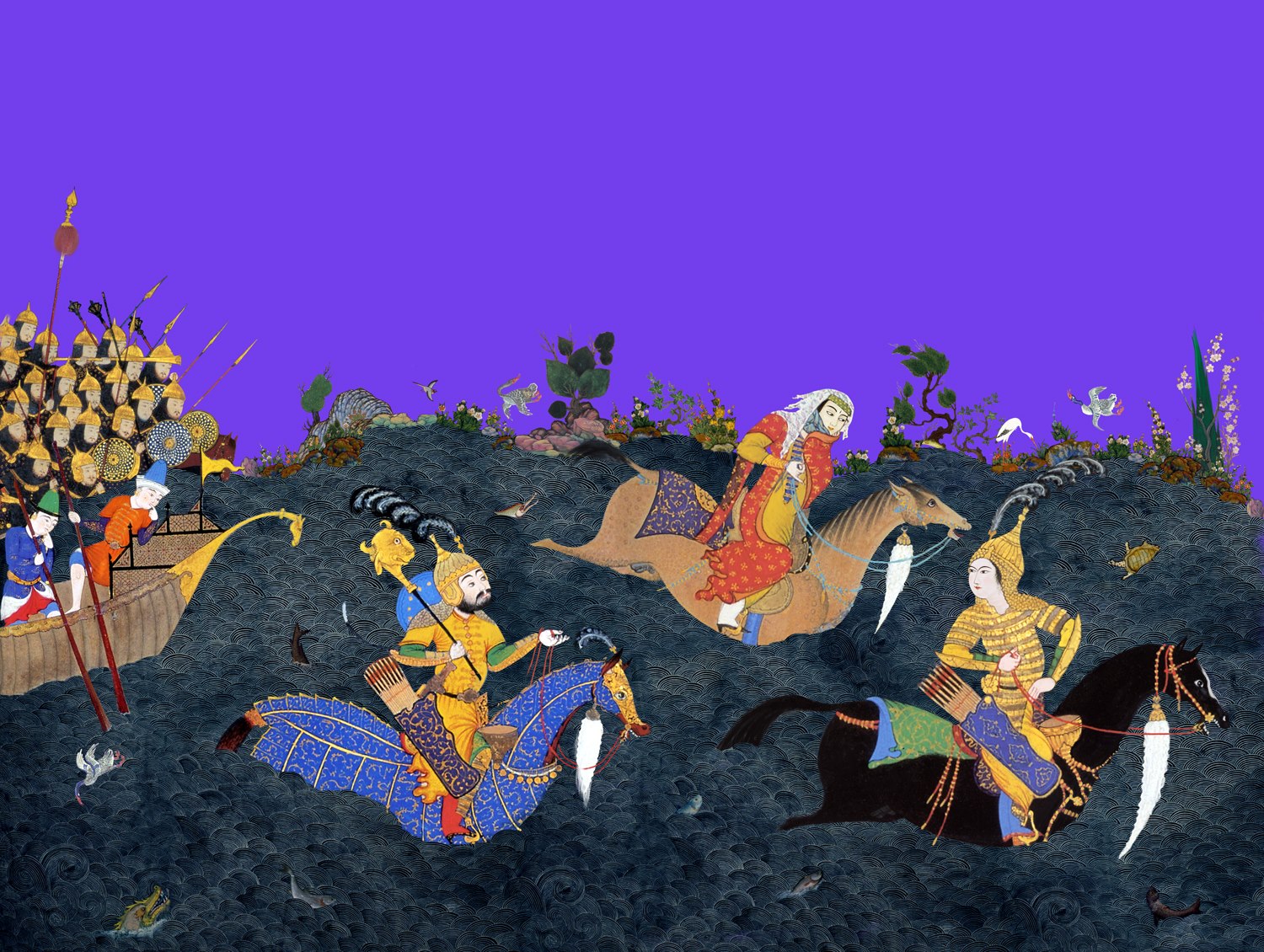
Which story from the Shahnameh speaks the most to you and why? Which particular characters, if any, stand out in your mind?
For me, the tragedy of Forood is very haunting, and very dramatic. It’s a lesser known tragedy, because [most] people know about Rostam and Sohrab, or the battle of Rostam and Esfandiar, and such … What is happening in the story, and its climax are really dramatic, and are never repeated anywhere [else] in the Shahnameh – I’ll leave it to the audience to read that part.
There are so many interesting characters in the book that fascinate you, and some of them have very modern attributes, like the Akhvan-e Div – have you seen X-Men!? The Akhvan-e Div [could be] a character … Also, the character of Piran, the Turanian commander, who is an enemy of Iran … [through him] Ferdowsi shows how the Shahnameh is not only about nationalism, and how Iranians are not always the ‘best’! Piran is a fascinating character who is wise, and seeks peace … we also find foolish kings like Key (King) Kavus … it’s very balanced.
In my opinion, the world of the Shahnameh is very similar to [the television series] Game of Thrones … Goodarz, Zal, Rostam … they’re [rulers] of their own kingdoms, but they’re [under the banner of] the Shah in Estakhr, which was the capital of Iran at the time.
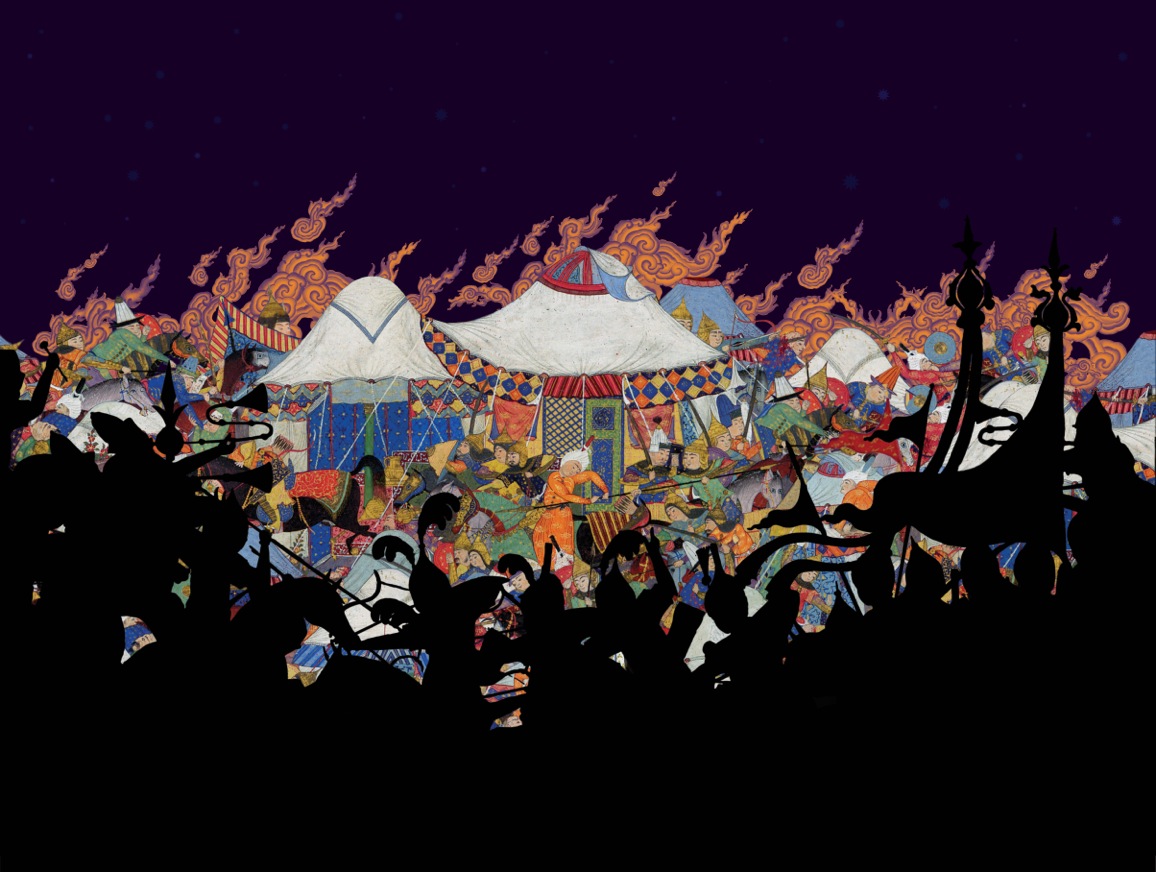
What do you think the Shahnameh symbolised, not only in Iran, but in other countries where manuscripts were produced and Persian culture had an influence, such as in the Ottoman Turkey, the Caucasus, Central Asia, and South Asia?
When you talk about mythology and epic traditions from one [region] … all the characters in these traditions [have been] combined from different characters and different stories … So, these legends in different forms and different stories existed in different territories and … have somehow [resurfaced] a few thousand years later … People related to [the Shahnameh] in the region, because they [saw in it] similarities with some of their own mythological characters or heroes … there are a lot of [similar characters] in the Bhagavad Gita, or even in Shakespearean tragedies – these are stories which belong to humanity, not just one region.
Yes, I noticed the striking similarities in style, form, narration, and characters between the Shahnameh and the Mahabharata, for instance, which isn’t surprising, considering the singular origins of the Iranian and Northern Indian peoples … particularly interesting for me, however, is the influence of the Shahnameh in Ottoman Turkey, given that the Safavids and Ottomans were bitter rivals.
You once mentioned Orhan Pamuk’s My Name is Red … most of the miniature masters from Ottoman Turkey went to Tabriz and trained there … the school of Shiraz was [also] very, very influential … [As well], after the demise of the Safavid empire, all of these [Iranian] artists moved around the region, to Turkey or India, and established workshops there … it shows that if, politically, we were enemies [laughs], we were culturally and visually similar!
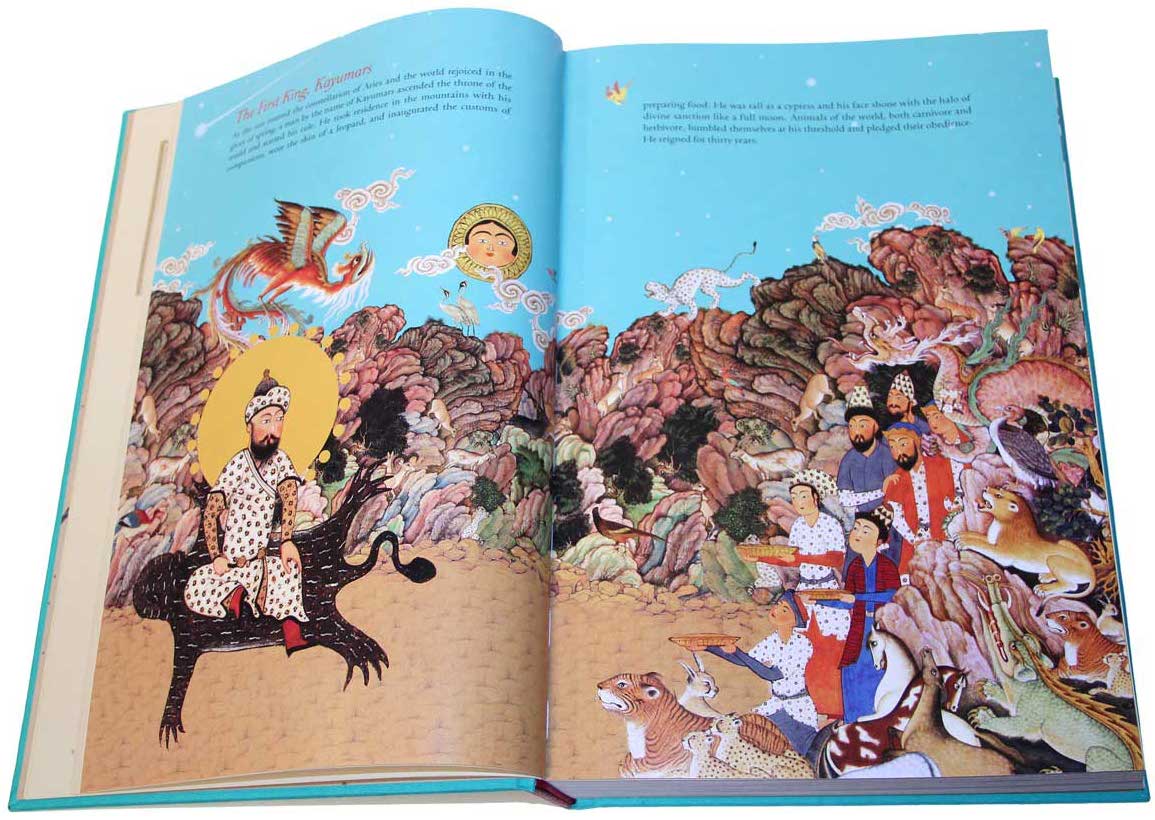
Taking into account lauded works of contemporary literature such as My Name is Red, modern translations of the Shahnameh, Shirin Neshat’s Book of Kings series, and other various artistic interpretations of Ferdowsi’s epic that have been produced in recent years, what do you think the Shahnameh has to say today? Is it as relevant as it was during the era in which it was written, over 1,000 years ago? What does it mean to you?
We are connected to our past – not disconnected – and the stories in the Shahnameh always [have something to say] … like the stories of, for instance, Fereydoon and Kaveh, [which were] about the battle of the masses against the tyrant king … During the Shah, people compared [Ayatollah] Khomeini to Kaveh, because Kaveh was the one who [rebelled against] the [Arab demon king] Zahhak, and created the flag of Iran (the Derafsh-e Kaviani), and with Fereydoon, overthrew him; this [story] spoke to people during the Revolution. Now, [we’re seeing] the same struggle of people who [are fighting for] freedom; these people identify with the same fight against evil that we see in the Shahnameh. For instance, you had Sohrab A’arabi, who died in the Green Movement … Sohrab is not only an Iranian name, but also resonates [with] the legend of Sohrab, so people connected with it on a different level. [Earlier], the Pahlavi dynasty promoted the Shahnameh because the Shah wanted to [create a link] with the kings of yore and old traditions. Now, the masses in Iran have become so fond of the Shahnameh, because it somehow [acts as a] defense mechanism against the Islamic Republic, who do not promote the Shahnameh, as they think it’s a ‘rival’ to the Koran – they call it an ‘old relic’. This book will always remain [relevant] in the current affairs of Iranians, one way or another.
